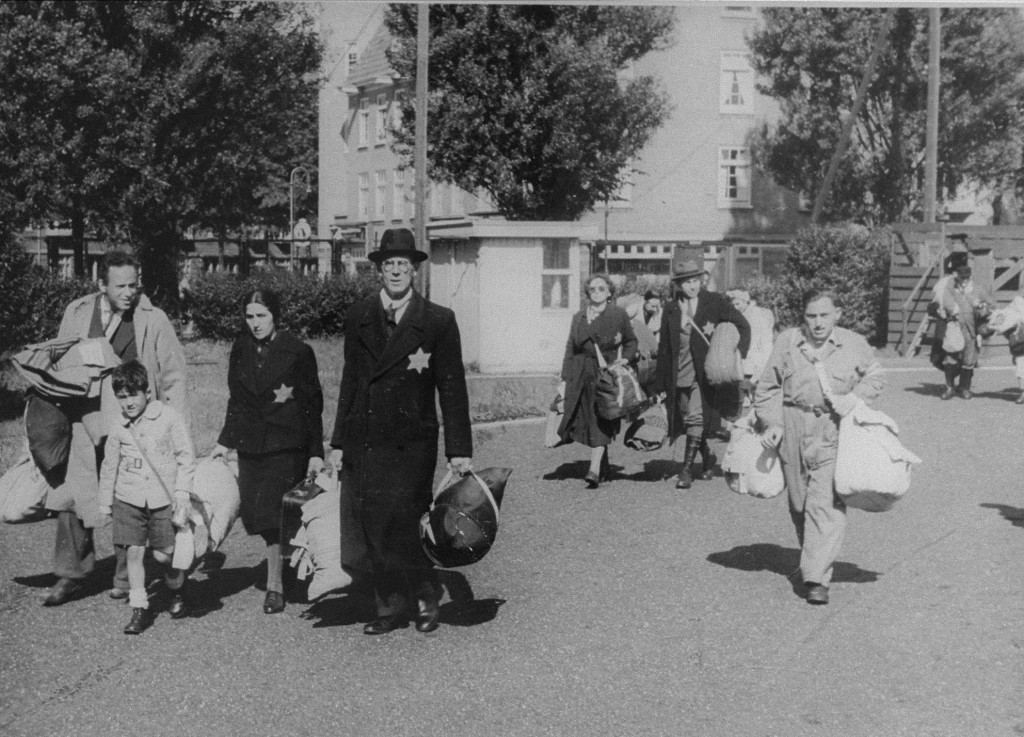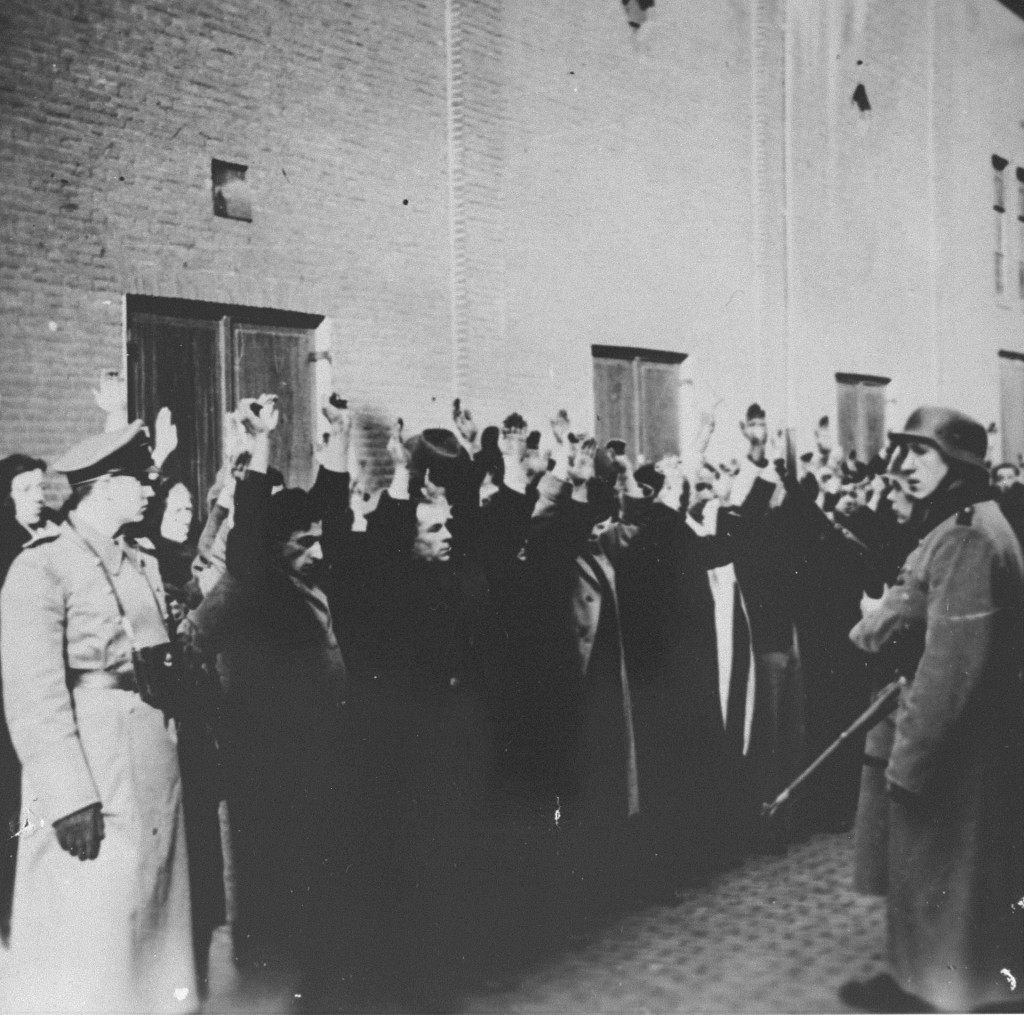
Amsterdam
The Germans occupied the Netherlands on May 10, 1940, and established a civilian administration dominated by the SS (the elite guard of the Nazi state). Amsterdam, the country's largest city, had a Jewish population of about 75,000, which increased to over 79,000 in 1941. Jews represented less than 10 percent of the city's total population. More than 10,000 of these were foreign Jews who had found refuge in Amsterdam in the 1930s.
On February 22, 1941, the Germans arrested several hundred Jews and deported them from Amsterdam first to the Buchenwald concentration camp and then to the Mauthausen concentration camp. Almost all of them were murdered in Mauthausen. The arrests and the brutal treatment shocked the population of Amsterdam. In response, Communist activists organized a general strike on February 25, and were joined by many other worker organizations. Major factories, the transportation system, and most public services came to a standstill. The Germans brutally suppressed the strike after three days, crippling Dutch resistance organizations in the process.

In January 1942, the Germans began the relocation of provincial Jews to Amsterdam. Within Amsterdam, Jews were restricted to certain sections of the city. Foreign and stateless Jews were sent directly to the Westerbork transit camp. In July 1942, the Germans began mass deportations of Jews to killing centers in occupied Poland, primarily to Auschwitz but also to Sobibor. The city administration, the Dutch municipal police, and Dutch railway workers all cooperated in the deportations, as did the Dutch Nazi party (NSB). German and Dutch Nazi authorities arrested Jews in the streets of Amsterdam and took them to the assembly point for deportations—the municipal theater building. When several hundred people were assembled in the building and in the back courtyard, they were transferred to Westerbork. In October 1942, the Germans sent all Jews in forced-labor camps and their families to Westerbork. All were deported to Auschwitz-Birkenau within a few weeks.
In May 1943, German authorities ordered 7,000 Jews, including employees of the Jewish council in Amsterdam, to assemble in an Amsterdam city square for deportation. Only 500 people complied. The Germans responded by sealing the Jewish quarter and rounding up Jews. From May through September 1943, the Germans launched raids to seize Jews in the city.
The Germans confiscated the property left behind by deported Jews. In 1942 alone the contents of nearly 10,000 apartments in Amsterdam were expropriated by the Germans and shipped to Germany. Some 25,000 Jews, including at least 4,500 children, went into hiding to evade deportation. About one-third of those in hiding were discovered, arrested, and deported. In all, at least 80 percent of the prewar Dutch Jewish community perished.
In the spring of 1945, Canadian forces liberated Amsterdam and the rest of the Netherlands.
Critical Thinking Questions
- What pressures and motivations might lead individuals and institutions to collaborate with an oppressive or even murderous regime?
- How can these factors be countered or limited?

